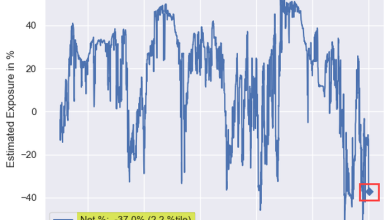Drowning In Debt? Here’s The First Step You Should Take

Select’s editorial team works independently to review financial products and write articles we think our readers will find useful. We may receive a commission when you click on links for products from our affiliate partners.
It’s easy to feel overwhelmed by debt. Unpaid student loans, an ever-increasing credit card balance with high interest, a monthly car payment: these are just a few reasons why young consumers feel like they carry a huge financial weight on their shoulders.
In fact, a survey conducted by Select and Dynata found that nearly half (44%) of 18- to 34-year-olds feel like they are “drowning in debt.” While it can sometimes seem difficult to see a light at the end of the tunnel, the best move these debt-burdened adults can make is to simply do something, argues Kristen Ricupero, a financial coach and consultant at Financial Fitness Coaching.
“It doesn’t need to be big to be effective,” Ricupero explains. “Money is more emotionally and behaviorally charged than it is about the numbers.”
Her point is that your debt payoff journey can start with little wins, such as applying a small savings you have to your credit card balance or cutting out costs to find extra money. This can help motivate you to take the next small step, and so on until your debt is a thing of the past.
Subscribe to the Select Newsletter!
Our best selections in your inbox. Shopping recommendations that help upgrade your life, delivered weekly. Sign-up here.
Your first step: Do something, even if it’s small
Many people feel like they can’t move forward and accomplish life goals because they have too much debt. But keep in mind that any small step in the right direction can help put you on track.
“Too often the problem of feeling saddled by debt isn’t because we don’t make enough money to eliminate it, but because we don’t know where to start or where our money is going,” Ricupero explains.
If you feel like you’re drowning in debt, she encourages you to start by simply looking at your bank account so you can get a clearer understanding of your past spending. Doing this can help you see your purchasing habits and reveal categories where you may be able to cut back your expenses. One of the goals is to find excess money that can go toward your debt.
Then, pick one debt to pay off
Most people who feel overwhelmed by debt are carrying balances on multiple accounts, whether they have more than one credit card, student loan debt or a big car loan. Sometimes, it can be hard to prioritize what to pay off first.
You need to make at least the minimum payments on all your other debts in order to keep your accounts current — and your credit score stable. After that, figure out the best debt repayment plan for you.
You can choose to pay off your smallest balance first (snowball method) or focus on the debt with the highest interest rate (avalanche method).
Once you figure out how much extra cash you have to put toward your debt, Ricupero recommends you just put it toward one balance. Spreading out that extra cash to pay off multiple balances at once is one of the “biggest mistakes” she sees that keeps people in debt longer.
“The impact on the principal is greatest when you put everything toward one debt,” Ricupero says. “You’ll make faster progress, causing you to want to continue on the path when you focus on one at a time.”
If you have credit card debt, consider this third step
If you carry a revolving credit card balance, you might want to focus on it first, given credit cards’ notoriously high interest rates. “Interest can quickly compound and grow each month,” says Leslie Tayne, a debt-relief attorney at Tayne Law Group.
Consider signing up for a balance transfer credit card. When you make a balance transfer, you move debt from one credit card to a new card that offers a low or 0% introductory interest rate period, which usually lasts six to 21 months. During this period, you won’t incur any additional interest charges, and you can benefit from your payments going entirely toward your principal balance.
The Citi® Diamond Preferred® Card has a long 0% APR on balance transfers for the first 21 months, which is nearly two years (after, 13.74% to 23.74% variable APR.) Keep in mind that all transfers must be completed in the first four months from account opening, and there is a balance transfer fee of $5 or 5% of the amount of the transfer, whichever is greater.
The Citi® Double Cash Card offers no interest for the first 18 months on balance transfers (after, 13.99% to 23.99% variable APR; balance transfers must be completed within four months of account opening.) An intro balance transfer fee of 3% ($5 minimum) applies for each transfer completed within the first 4 months; after that, a balance transfer fee of 5% of each transfer ($5 minimum) applies. The Citi Double Cash Card also has a cash-back rewards program where cardholders earn 2% cash back: 1% on all eligible purchases and an additional 1% after they pay their credit card bill (you don’t earn rewards on any transferred balances).
Catch up on Select’s in-depth coverage of personal finance, tech and tools, wellness and more, and follow us on Facebook, Instagram and Twitter to stay up to date.
Editorial Note: Opinions, analyses, reviews or recommendations expressed in this article are those of the Select editorial staff’s alone, and have not been reviewed, approved or otherwise endorsed by any third party.
Buka akaun dagangan patuh syariah anda di Weltrade.
Source link





